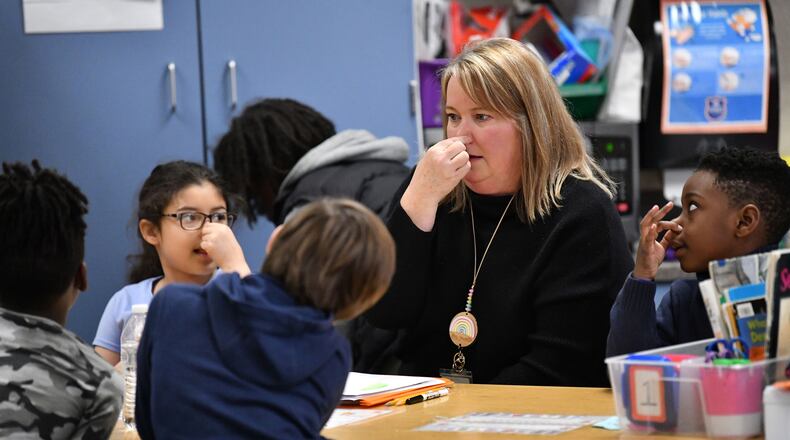State education leaders have settled a dispute over how to interpret test scores that indicate whether young Georgians can read well enough — and potentially whether they need to repeat third grade.
The state Board of Education decided Thursday that students who score from 520 to 820 on the Lexile Framework for Reading are ready for fourth grade.
The interagency disagreement over the interpretation of scores on some questions in the Georgia Milestones English tests also affects the reporting of statistics on the size of Georgia’s literacy problem.
The Governor’s Office of Student Achievement wanted the “cut” scores set in a way that would have meant fewer than half of third graders were considered on grade level based on the scores in 2022. The Georgia Department of Education’s interpretation, meanwhile, had about two-thirds ready for the next grade based on those same results.
The lower literacy rate has been wielded by lawmakers and others as evidence of a literacy “crisis.” Earlier this year, the Georgia General Assembly passed two literacy bills that Gov. Brian Kemp signed into law. They require schools to align their curriculum and teacher training with an increasingly popular body of research called the “science of reading” while encouraging an overhaul of the educational requirements to become a teacher.
The legislation also called on the state Board of Education to pick a literacy metric. The board went with the Education Department’s interpretation. The governor’s achievement office had considered only scores above the midpoint of the Education Department’s range — 670 — to be proficient.
The governor’s achievement office supported the Education Department’s interpretation after language was added to report the percentage of students scoring below the midpoint, with a notation that they need “additional supports.”
That compromise mollified a key proponent of the achievement office’s tougher interpretation.
“This metric provides more transparency and information for educators, parents and students,” state Sen. Billy Hickman, R-Statesboro, said in a text message to The Atlanta Journal-Constitution after the vote. During the 2023 legislative session, he used the lower proficiency rate reported by the achievement office in encouraging passage of Senate Bill 211 and House Bill 538, the legislation overhauling literacy education.
Had the state board gone with the tougher interpretation of the Lexile scores, it would have meant 53,507 third grade students were considered reading proficient in 2022. That compares with the 77,528 who were considered ready to advance to fourth grade under the metric approved Thursday.
That’s a difference of more than 24,000 students. Had the tougher measure been in place, they might have been subject to repeating third grade, the state Education Department’s official over testing told the education board.
Credit: Contributed
Credit: Contributed
State School Superintendent Richard Woods said he supported the Education Department’s interpretation. His chief of staff, Matt Jones, said the organization that created the Lexile measure had established the scoring range that the Education Department was using and that all other states that use the measure have the same interpretation.
Ben Scafidi, a Kennesaw State University economics professor, had endorsed the tougher interpretation of the scores by the achievement office. That agency asked him to review their research showing third graders who scored below 670 points were more likely to fall behind in literacy later and less likely to graduate from high school.
“The data told them that that was the correct metric to use,” Scafidi said in an interview Thursday after the board’s vote.
The added requirement of reporting the percentage of students who score below 670 provides more transparency about the state of literacy in Georgia, said Scafidi, director of the Economics Education Center in KSU’s Coles College of Business. “And if that doesn’t improve scores enough, then I think they should revisit this in a year or two, and say, ‘Do we need to say that students below 670 are below grade level?’”
About the Author
Keep Reading
The Latest
Featured



